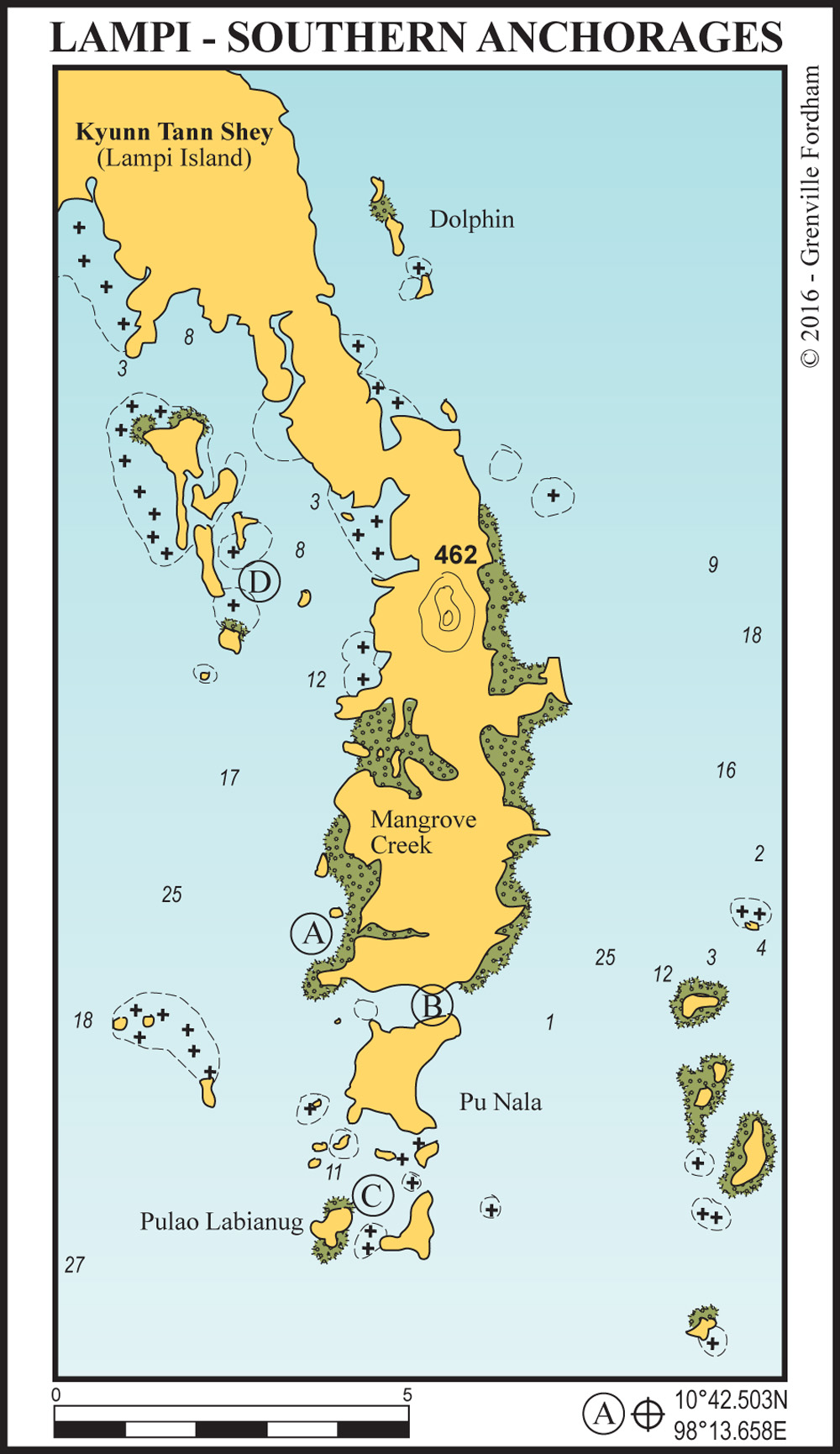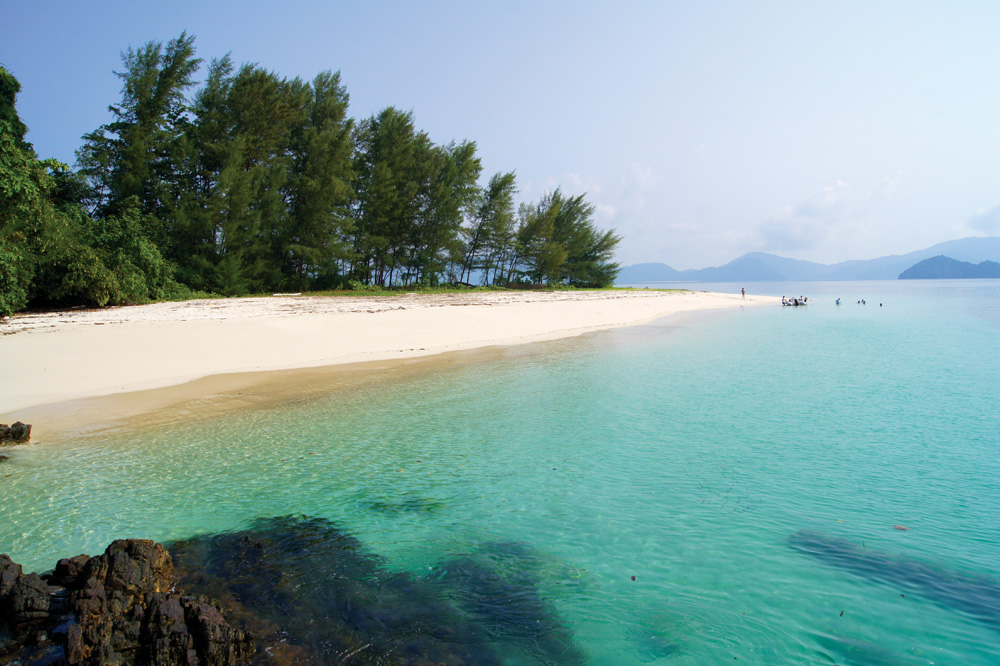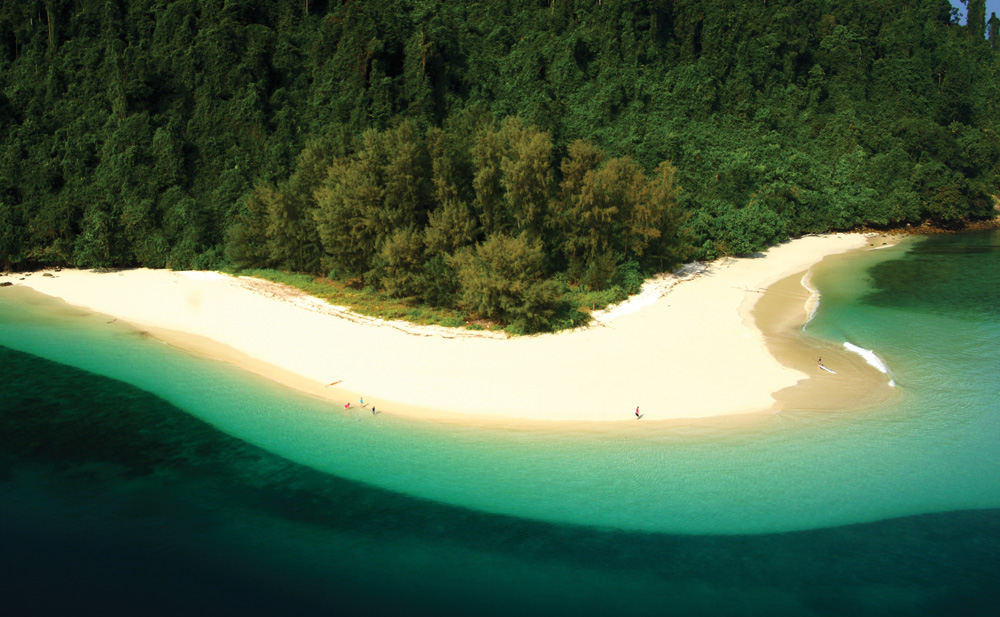
It is possible to anchor just about anywhere off the western coast of Lampi Island, the largest island in this southern group and, apart from the occasional nomadic fishing village, largely uninhabited. The size of Lampi allows it to support much larger wild animals, including leopard and a small herd of elephant.
50 miles from Kaw thaung










Anchor anywhere on sand in 6-12 metres. The mangrove river is superb for dinghy exploring with plenty of wildlife and huge century-old mangrove trees towering overhead.
4 miles from Lampi Anchorage ‘A’





Enter the passage either side of the small rock island and south of the drying rock in mid-channel. Anchor in 7-10 metres on a mud and sand bottom off the eastern end of the small village. The currents can run up to three knots at mid-tide, so put out plenty of chain.
This village is the only habitation in the area and is definitely worth a visit. The local monk at the Buddhist temple is a very welcoming and interesting character.
A local boat builder has recently set up shop behind the bridge in the village. He is constructing traditional Moken boats that are being hand-sawn from trees on site. Take your camera.
5 miles from Lampi Anchorage ‘A’


A small island with a spectacular white sand beach backed by casuarina trees. Anchor in 6-8 metres on a sand bottom clear of the fringing reef.

6 miles from Lampi Anchorage ‘A’










This is a highly unusual area of mangroves and shallow waterways which is ideal for exploring by kayak and dinghy. There are around 30 small beaches on these islands and probably as many anchorages.
The islands support a thriving bird and wildlife population. It is common to see flocks of over 100 wreathed hornbills competing for a particularly desirable perch on the highest trees.
There are also Asian wild cats, fruit bats and macaque monkeys that make this home.

